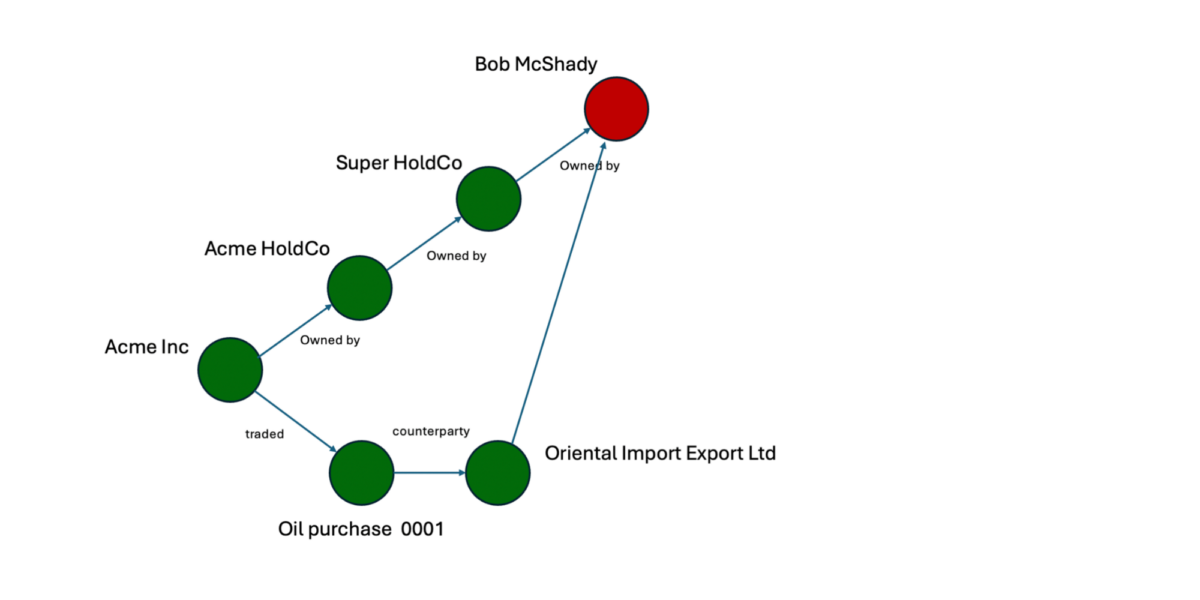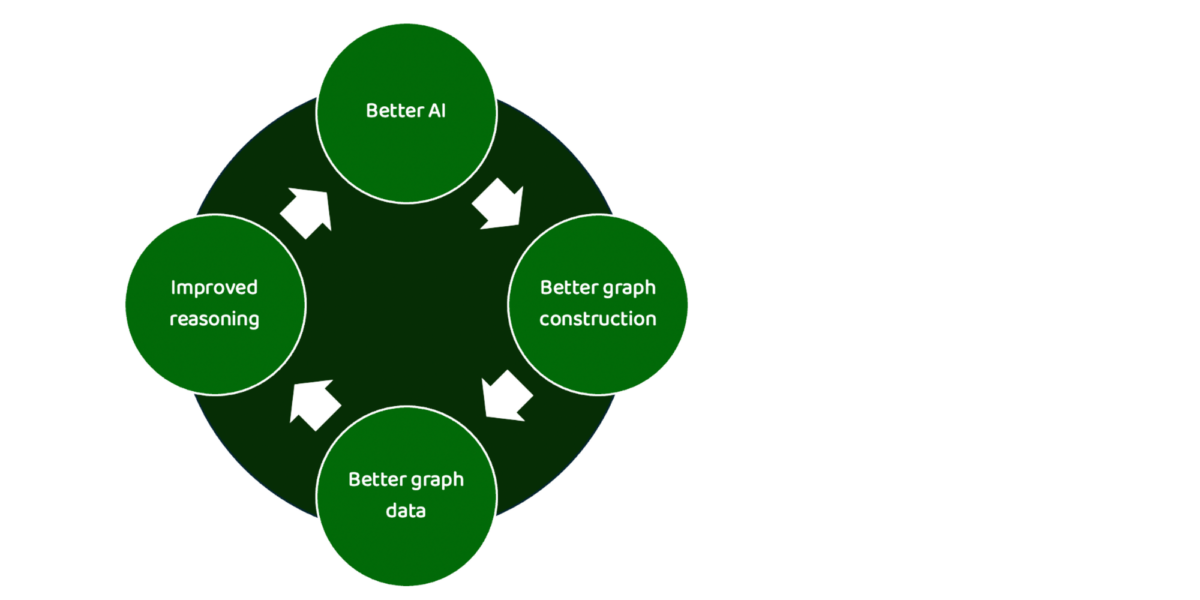“Graph” what? Let’s start with an example.
You probably have a trusty old legacy system and relational database. They are very good at answering “static information” questions. Let’s say you want to know more about your customer, “ACME Inc.”:
- Where are they headquartered? Portland
- How many employees work there? 2,500
- Who is the CEO? Robert McSample
They are less good, however, at answering questions about relationships:
- Who is the ultimate beneficial owner of ACME Inc., and does the path to them include any unsavoury characters?
- Of all the activity with ACME, what is the most common country or currency?
- Does ACME Inc create any exposure to sanctioned countries, via any activity you have with them? Owners? Trading activity? Underlying instruments of derivatives? Supply chain?
- How are the answers to the above questions changing over time? Did anything change in the last 3 months?
Can you answer these with a relational database? Sure, you can – how big is your wallet?
But it’s extremely hard at scale, it won’t be out of the box. As a consequence, you most likely have to buy a vendor product or do a big in-house build around the database.
Unless you have a graph. Preferably, a knowledge graph where everything in it has meaning defined by you.

Luckily, graph data technology is a big beneficiary of the current AI boom.
Not just because it turns out to be very useful with LLMs that need to answer complex questions about your data, but also because the complexity of graph technology itself is finally becoming more accessible.
Why is Graph Data Technology not mainstream yet?
Well, it’s just been too hard to do this in the enterprise up to this point. But that is now changing rapidly.
The following confluence of events is making graphs extremely interesting right now:
- Graph databases are becoming more mainstream: faster systems that can handle more data are coming to market
- AI, via code generation, schema generation, and essentially “free” semantic labelling, is a huge enabler here. It is making it easier to get data into a graph format in the first place, overcoming the bootstrapping problem
- It turns out that in some situations, language models perform better when fed with graph data: the context is more relevant, and you’re not dumping tons of irrelevant information on the model at once, helping it to reason better
This creates a sort of flywheel effect:

The final missing ingredient is people. Graph technology is relatively niche. There are hordes of people who can handle SQL, not so many who understand graph modelling and queries.
With the current uptick in adoption, we should see an increase in one of the most important ingredients for mainstream adoption: more talent available for hire. That means more people who have used graph databases at scale, and can recognise and solve business problems with them.
What are we looking for?
At 13books, one of our beliefs is that vertical focus is extremely important in the age of AI. Horizontal tech is great, but it needs to solve a business problem. In our case, we are focused on Financial Services.
We are interested in tooling that forms the new foundation layer. Many platforms here will be open source, or freemium:
- Faster and easier enterprise knowledge graph creation, via specialised models or reimagined ETL for graph data
- High-performance graph technology
- Re-imagined Financial Services applications built on the new stack, including but not limited to:
- Know Your Customer/Business (KYC/KYB)
- Anti-money laundering (AML)
- Customer relationship management
- Fraud detection
- Customer analytics
- Producing and pricing optimisation
Where do we end up?
It’s been 20-30 years since knowledge graphs, graph databases, and the Semantic Web first made an appearance.
So far, there has been little progress outside firms like Google, which have been able to invest in these technologies at a level that most companies can’t match.
Now, for the first time in three decades, accessible knowledge powering smarter AI and better decision making are becoming a reality. Will the technology become democratised, creating a knowledge graph of information in every company?
Whoever figures out the best positioning for enabler technology in this space will make it big. Is that you?